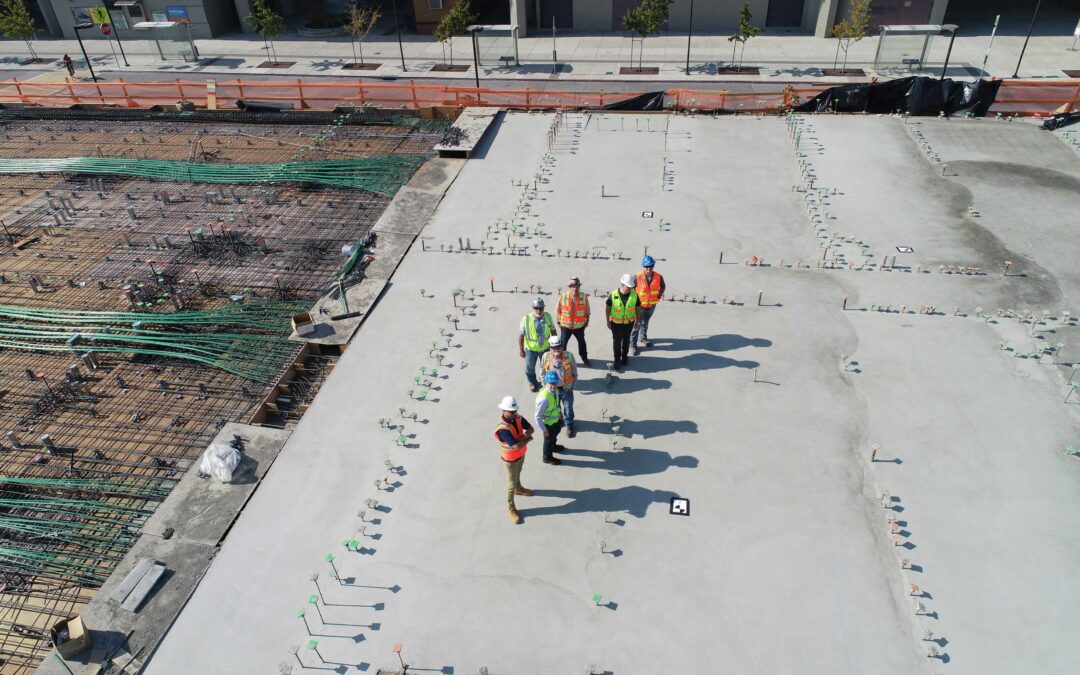The push for sustainability in today’s construction industry has become a defining factor in how projects are designed, built, and maintained. One of the most effective ways to align with this trend is by using high-efficiency building materials which not only reduce construction costs over time, but also contribute to environmental sustainability.
This article explores how high-efficiency building materials can help you save money while promoting sustainable practices.
Importance of Sustainability in Construction
The construction sector has a profound impact on the environment, accounting for significant energy use and greenhouse gas emissions. By prioritizing sustainability, we can mitigate these effects while addressing economic challenges. High-efficiency building materials play a pivotal role in this shift by offering long-term cost savings and reduced environmental footprints.
Understanding High-Efficiency Building Materials
What are these materials?
High-efficiency building materials are designed to optimize energy performance, durability, and sustainability. They often feature properties such as superior insulation, minimal thermal bridging, and eco-friendly sourcing.
Common Types and Examples
Some widely used high-efficiency materials include:
- Insulated Concrete Forms (ICFs): Provide excellent thermal insulation for reduced heating and cooling costs.
- High-Performance Mechanical Systems: Advanced solutions like Energy Recovery Ventilators (ERVs), air-to-air, and air-to-water heat pumps enhance energy efficiency by optimizing ventilation, heating, and cooling with minimal energy waste.
- Low-Emissivity (Low-E) Windows: Minimize heat loss during winter and reduce heat gain during summer.
- Recycled Steel and Timber: Offer structural strength while lowering the demand for new resources.
Cost Savings with High-Efficiency Materials
Lowering TCO with IBG Designs
Affine Climate Solutions performed a Total Cost of Ownership (TCO) analysis in 2024 revealing that IBG Design buildings significantly outperform conventional multifamily housing in BC. On average, these buildings reduce energy consumption by 42% compared to standard designs, translating into 46% lower annual energy costs—approximately $37,000 in yearly savings per building. Over a 60-year lifespan, this equates to $2.2 million less in energy expenses. Additionally, the IBG Design cut lifetime carbon emissions by 93%, reinforcing its long-term economic and environmental benefits.
Initial Investment vs. Long-Term Savings
While the upfront costs of high-efficiency materials might be higher, their long-term financial benefits far outweigh the initial expenditure. In a report by the Smart CRE, they found that green buildings can save between 25-50% on energy costs, 10-40% on water consumption, and reduce maintenance costs by about 12%. These savings accumulate over time, leading to significant reductions in overall operating expenses.
Reduction in Energy Costs
High-efficiency materials reduce the need for extensive HVAC systems by maintaining consistent indoor temperatures. For example, Low-E windows can decrease energy bills by up to 30% by reducing heat transfer.
Maintenance and Durability Benefits
These materials are often more durable than traditional options, requiring less frequent repairs and replacements. This reduces ongoing maintenance costs and enhances the lifespan of the building.
Sustainability and Environmental Impact
Reduced Carbon Footprint
High-efficiency materials minimize energy consumption and resource use during the building’s lifecycle. For instance, recycled steel requires less energy to produce and reduces landfill waste. Each ton of recycled steel saves approximately 2,500 pounds of iron ore, 1,400 pounds of coal, and 120 pounds of limestone. Collectively, the steel recycled annually in Canada conserves enough energy to power 2.7 million households.
Contribution to Green Building Standards
Utilizing these materials early in the timeline helps projects to meet or exceed the National Energy Code and Provincial Step Code regulations, which set the industry expectations and enhance property value and marketability.
Improved Indoor Air Quality
Many high-efficiency materials are free from volatile organic compounds (VOCs), ensuring healthier indoor environments for occupants. This is especially important in residential and commercial spaces where air quality directly impacts health and productivity.
Case Studies and Success Stories
UBC Renew Chemistry Centre Block Project
Vancouver, British Columbia
The University of British Columbia recently undertook a significant retrofit of its historic Chemistry Centre Block to enhance energy efficiency while preserving its heritage value.
High-Efficiency Features:
- Energy-Efficient Windows: Installation of high-performance windows to reduce heat loss.
- Improved Insulation: Upgraded insulation materials to enhance thermal performance.
- Efficient HVAC Systems: Implementation of modern heating, ventilation, and air conditioning systems to optimize energy use.
The project successfully reduced energy consumption and operational costs while maintaining the building’s historical integrity.
Earth Rangers Centre
Woodbridge, Ontario
The Earth Rangers Centre is recognized as one of the most energy-efficient buildings in Canada, and serves as a hub for environmental education and showcases sustainable building practices.
High-Efficiency Features:
- Geothermal Heating and Cooling: Utilizes a ground-source heat pump system to efficiently regulate indoor temperatures.
- Solar Photovoltaic Panels: Generates renewable energy on-site, reducing reliance on external power sources.
- Green Roof: Enhances insulation, reduces stormwater runoff, and supports local biodiversity.
The centre has achieved an amazing 90% reduction in energy consumption compared to conventional buildings of similar size. It also serves as a demonstration site for sustainable technologies, educating thousands of visitors annually.
Conclusion
High-efficiency building materials offer a win-win solution by providing significant cost savings and promoting sustainability. By investing in these materials, builders and developers can achieve long-term economic and environmental advantages. If you’re ready to make the shift toward sustainable construction, explore how high-efficiency materials can transform your projects.
Learn more about how high-efficiency materials can work for you on our Efficiency In Action page.
